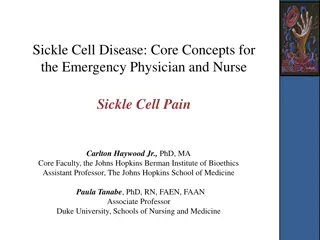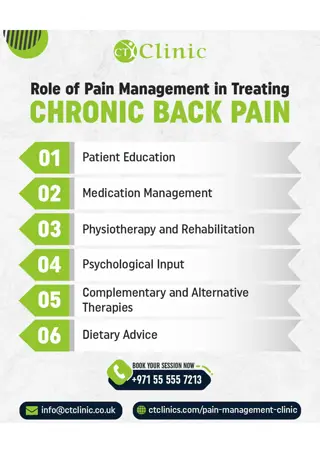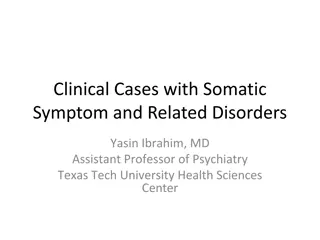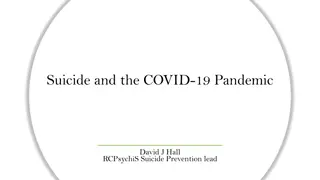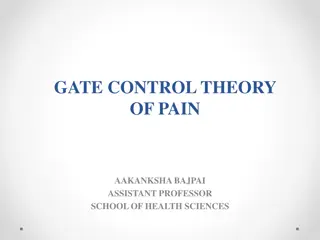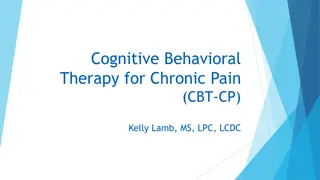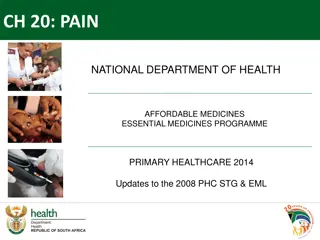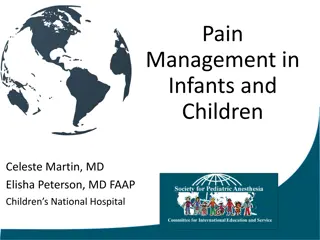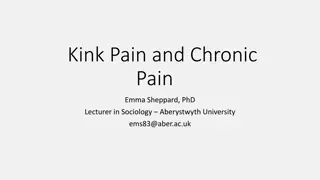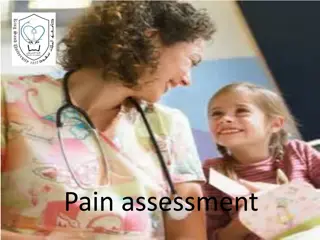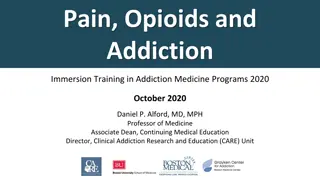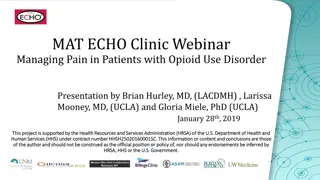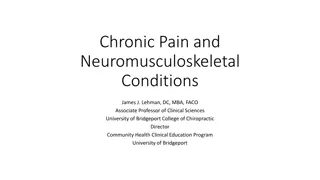Impact of COVID-19 Pandemic on Europeans with Chronic Pain
Content reveals challenges faced by Europeans with chronic pain during the COVID-19 pandemic. It discusses difficulties in accessing healthcare, medication use, technology integration, and concerns about COVID-19 risks and vaccines.
Download Presentation

Please find below an Image/Link to download the presentation.
The content on the website is provided AS IS for your information and personal use only. It may not be sold, licensed, or shared on other websites without obtaining consent from the author.If you encounter any issues during the download, it is possible that the publisher has removed the file from their server.
You are allowed to download the files provided on this website for personal or commercial use, subject to the condition that they are used lawfully. All files are the property of their respective owners.
The content on the website is provided AS IS for your information and personal use only. It may not be sold, licensed, or shared on other websites without obtaining consent from the author.
E N D
Presentation Transcript
THE IMPACT OF THE COVID-19 PANDEMIC ON EUROPEANS WITH CHRONIC PAIN
Who responded to the survey? 970 people People living with pain for 10 years or longer were most represented Distribution of respondents by age 7 Languages: English Italian French Spanish Dutch German Bulgarian Distribution of respondents by gender
Top challenges during pandemic life? Through the bio-psycho-social model Access Medication Covid-19 testing & vaccine Technology Solutions Quality of life: mood, pain intensity, pain interference, sleep Employment & Income Social life
Access Nearly half 48.07% report that obtaining healthcare and services since the beginning of the pandemic was difficult or very difficult. Under-estimation and stigmatisation by medical professionals of my chronic pain condition: how often and how much it impacts on my life affects 303 (47.79%) Inadequate treatment options: 234 (36.91%) Difficulty of assessing if the information I see is correct or misleading 188 (29.65%) Delayed access to diagnosis 163 (25.71%) Thinking of access overall, how difficult, or easy has it been to obtain the healthcare, and services you needed since the beginning of the pandemic?
Medication use Technology Use of digital technology has increased in many areas of healthcare in the pandemic. 93.09% are using prescribed medication for their chronic pain. 49.37% are receiving advice or medical appointments via telephone. 24.73% are using over-the-counter (unprescribed) medication. However, 27.6% state that modern technology is not integrated in their treatment. This means that at least 17% of the respondents are using both. This fact could lead to unwanted drug interactions. Although only 10.41% say that they are currently having video consultations, 40.22% say this would be their preferred digital management solution. 68.91% report that access to medicines is no harder during the pandemic. However, in Italy more than half found it more difficult. Still, 27.29% prefer personal contact.
27.01% consider themselves to be more at risk of contracting Covid-19 because of their chronic pain condition. 54.34% respondents are confident that they will avail of a vaccine, others are unsure or saying it depends and 11.53% saying they would not take it. Fewer than half the respondents had been tested for Covid-19 (46.76%) 18.80% considered that they had been exposed to Covid-19. 7.15% reported that they had been diagnosed with Covid-19. Most respondents (72.40%), are unsure or only somewhat confident in their healthcare system.
Quality of life Isolation Mood: 66% stated their mood was worse to much worse. 3.36% better! Solitude Loneliness Pain intensity: 54% reported their pain intensity was worse to much worse . Pain interference: 64% noted the degree to which pain interfered in their lives was somewhat to a great deal . Over 1 in 4 (28%) people felt they had no-one to talk to about their mood, feelings or psychological issues not even a family member Sleep disturbance: 43% noted no change in their sleep. While 57%stated sleep was worse to much worse . Tiredness Anger Fatigue Frustration Being controlled
Pre-pandemic vs during pandemic perceived quality of life: Quality of life: 0-none - 10-excellent
Employment and income Almost half of the respondents who chose to reply to the question Were you working before the pandemic, 47.62% say they were not. Of those who are still in work, only 6.17% have the flexibility to choose whether to work from home or attend the workplace, the others are almost equally divided between the two workplace options. 38.76% said they feel they are being paid less than you deserve in your job (wages / salary) due to their pain condition. And the same number feel that their chronic pain condition had an impact on lowering their total annual income (salary and/or other income).
Has your social life been disrupted because of the pandemic? Social Life As seen below, interestingly, two of the same social areas were graded as most disturbed and least disturbed: Close family contact, and Social clubs Different pictures emerged from each country in analysis. Most social disruption was reported in: UK: 42.74% Netherlands: 20.47%
Conclusion It is clear from this survey that the Covid-19 pandemic has had a complex and profound impact on people living with chronic pain, while they have been unable to access the health services they need. We have recorded an increase in the intensity of their pain, the interference that pain makes to their lives, and greater sleep disturbance. Captured also is a decrease in people s mood, and disruption to their social lives. In particular, this survey has revealed that some people living with chronic pain believe they have no one they can talk to when it comes to their mood or any psychological issues not even a family member. Most are willing to avail of a vaccine. This reflects the percentage of people concerned that they are at higher risk of contracting the virus. Medications remained available, however, access to other treatment and medical services are reported as difficult or very difficult. We have seen that many of the problems highlighted are overlapping. It is, therefore, unsurprising that the overall quality of life has decreased for those in pain due to the pandemic.



